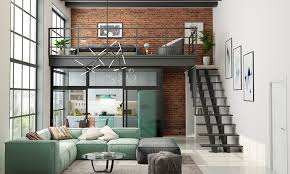Loft rooms have emerged as versatile and trendy living spaces, offering a unique blend of creativity and functionality. These elevated sanctuaries, often nestled under the eaves of a roof, have gained popularity for their ability to maximize space and provide a distinctive atmosphere. In this article, we will explore the enchanting world of loft rooms, examining their design features, practical uses, and the charm they bring to modern living.
Definition and Characteristics of Loft Rooms
A loft room, also known as an attic room or mezzanine, is a space situated directly under the roof of a building. Unlike traditional rooms, loft spaces typically feature sloping ceilings and unique architectural elements that add character to the room. Loft rooms can serve a variety of purposes, from bedrooms and home offices to creative studios and cozy reading nooks.
Optimizing Vertical Space
One of the primary advantages of loft room is their ability to make the most of vertical space. By utilizing the often-unused area beneath the roof, loft room allow homeowners to maximize square footage without expanding the footprint of the building. This is particularly beneficial in urban environments where space is at a premium, making loft rooms a popular choice for those seeking to optimize their living arrangements.
Design Considerations for Loft Rooms
Natural Light: Loft rooms often feature unique window placements that take advantage of available natural light. Skylights, dormer windows, or strategically positioned regular windows help create an open and bright atmosphere, mitigating the potential challenge of sloping ceilings.
Storage Solutions: Due to the limited floor space in loft room, effective storage solutions are crucial. Built-in cabinets, under-bed storage, and custom shelving units are popular design elements that maximize functionality while maintaining a clean and organized aesthetic.
Aesthetic Appeal: The architectural charm of loft room is a key element of their appeal. Exposed beams, angled ceilings, and the juxtaposition of different textures and materials contribute to a visually interesting and cozy environment. Homeowners often embrace the unique features of loft spaces, incorporating them into the overall design scheme.
Versatile Uses of Loft Rooms
Bedrooms: Loft room are frequently transformed into unique and intimate bedrooms. The cozy and private nature of these spaces, combined with the architectural charm, creates a tranquil retreat for relaxation and sleep.
Home Offices: With the rise of remote work, loft room make excellent home office spaces. The elevated location can offer a quiet and focused environment, and the architectural features contribute to a creative and inspiring atmosphere.
Creative Studios: Artists, writers, and hobbyists often find loft room to be ideal creative sanctuaries. The unique layout and abundant natural light create an inspiring atmosphere for various artistic pursuits.
Challenges and Solutions
While loft rooms offer many advantages, they also present challenges, such as limited headroom and potential difficulties with temperature regulation. Designers address these challenges through careful planning, the incorporation of skylights for ventilation, and the use of insulation materials to maintain a comfortable and energy-efficient environment.
Conclusion
Loft rooms epitomize the fusion of creativity and functionality in contemporary living spaces. Whether serving as a bedroom, home office, or creative studio. These elevated sanctuaries showcase the adaptability of architectural design to meet the evolving needs of homeowners. With their unique charm and space-saving ingenuity. Loft rooms continue to capture the imagination of those seeking a distinctive and personalized living experience.

